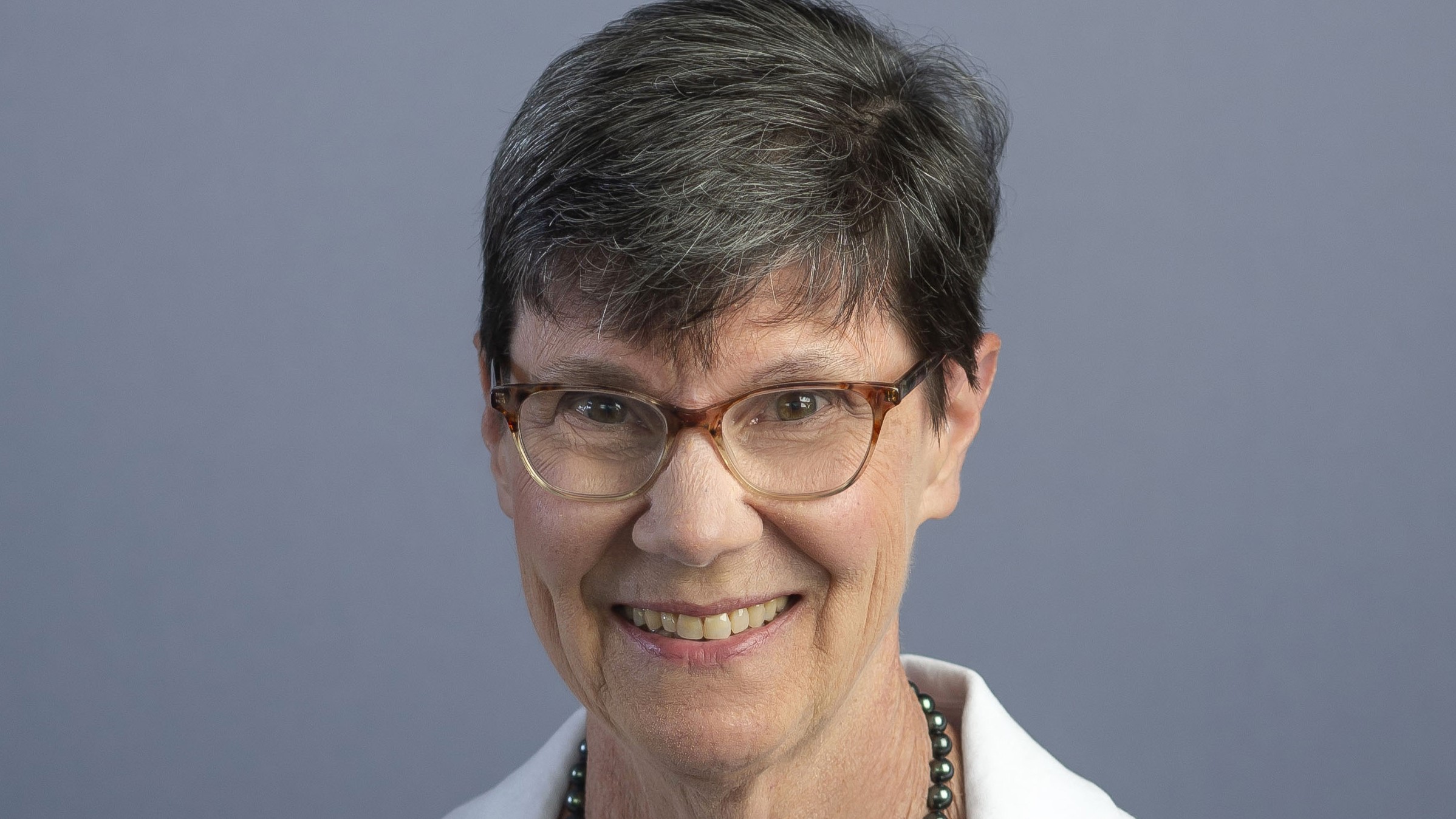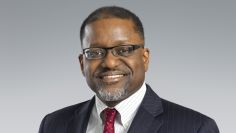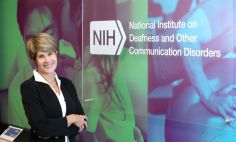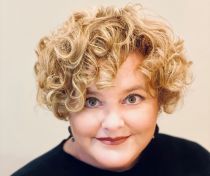Helene M. Langevin, M.D., was destined for a career in medicine. Not only did she grow up around doctors, but she was always curious about how the body worked. In 2018, she became Director of the National Center for Complementary and Integrative Health (NCCIH). NCCIH looks at how mainstream and nonconventional treatments, when used together, can improve whole person health. These treatments can be things like meditation or yoga.
Dr. Langevin talked to NIH MedlinePlus Magazine about her career and what we know about complementary and integrative medicine.
Can you talk about your background and what led you to study medicine?
I come from a family of doctors—there are so many doctors in my family, you can’t count them. I practiced internal medicine and was an endocrinologist. That is a doctor that specializes in the system of the body that controls hormones. But before that, in high school in the early 1970s, I had a teacher who taught us basic breathing and relaxation techniques to help us calm down before exams. That stayed with me. I became interested in tai chi, and then I learned about and practiced acupuncture. My interest in complementary medicine came from there.
You’ve done a lot of research on acupuncture. What about it interested you?
It was curiosity about an experience that I was able to observe myself. When you’re taught how to insert an acupuncture needle, you don’t just insert it. You manipulate it, you turn the needle around, you pull it up and down, and you feel something. The patient feels something, but the acupuncturist also feels something, like it’s grabbing the needle. I didn’t understand what that was.
There was this phenomenon that you could see and observe and feel but couldn’t explain. I was curious whether this could be measurable. I got funding to create a robotic device to insert the needle, manipulate the needle, and pull it out. It was successful. I ended up studying acupuncture for 25 years. But what I was studying was a basic biomechanical effect…it’s the binding of the needle to the connective tissue.
And today, that’s what I’m still doing in my lab at NIH—I’m studying how stretching connective tissue affects cells.
Why did you want to become NCCIH’s Director?
I became interested in expanding the concept of integrative medicine—specifically considering and treating the whole person, not just one organ or system at a time. After more than 20 years of doing research at the University of Vermont, I became the Director of the Osher Center for Integrative Medicine. The Center is jointly based at Harvard Medical School and Brigham and Women’s Hospital in Boston. I also had a lab at the hospital. My role at Harvard was to bring together all the programs in integrative health and medicine into one.
Once I became Director of NCCIH, this idea of whole person health became the central theme of our new strategic plan. So these are themes that I had already started developing before coming to NCCIH.
What does “complementary and integrative health” mean?
“Complementary” means therapies or practices that originated outside of conventional medicine. These are gradually integrated into mainstream health care based on scientific evidence. These therapies used to be called “alternative,” but not anymore. We don’t think the term “alternative medicine” is a good idea because these therapies should not be used instead of conventional care. “Complementary” is a better term because these approaches can be used together with mainstream medicine. Increasingly, the boundary between conventional and complementary treatments is becoming blurred. For example, if you go to a physical therapist, they may do manual techniques that are similar to what a massage therapist would do. A lot of times these practitioners are cross trained in mainstream and complementary medicine.
At NCCIH, we focus on the concept of “integration.” Integrative health means bringing together approaches that are typically nonpharmacologic (they don’t use drugs) to address the whole person. A lot of times these approaches are used together to address nutritional, psychological, and physical components of health.
How does NCCIH determine whether a complementary medicine is safe or effective? Do you use the same methods as you would to evaluate conventional medicine?
It’s the same principle—all the research we fund has to test a well-defined scientific hypothesis. It needs an appropriate research design and controls, safety measures, statistical analyses, and so on. Typically, when you study a treatment or drug, you study the effects of one molecule on one target. If you’re studying people, you compare the treatment to a placebo (something that mimics the treatment but doesn’t have any active ingredients).
When you’re studying a nonpharmacologic treatment, especially when you combine several at a time, that becomes more complex. We had a workshop at NCCIH on how to do this using cutting-edge scientific methods. We’re starting to understand how to study complex systems and measure how a system changes over time. We’re very excited to use these kinds of methods to study whole person health.
How can people find out whether a complementary health provider is reputable or qualified in their field?
Find out where they did their training. For example, ask acupuncturists or chiropractors where they trained, if they have a diploma from an accredited organization, and if they have a license. A lot of the schools that teach integrative therapies help maintain standards in their profession. And many of them are affiliated with research organizations.
Or you can ask your health care provider for referrals to complementary practitioners associated with a hospital or clinic or who they recommend. Make sure your regular health care provider is aware of the integrative care you’re getting. We have resources on the NCCIH website that can help.
Dietary supplements such as vitamins, minerals, herbs, and other botanicals are a gray area of medicine and nutrition. Where would you direct people to get more information about them?
NCCIH supports the idea that most people can get the nutrients they need from the food they eat. In general, there is no need to take dietary supplements if you eat a healthy, balanced diet and do not have an underlying health condition that requires vitamin or mineral supplements. There are also botanicals (plants) that people take in the hope of, say, increasing their immune function or to help with sleep or relaxation. This is what we call a medicinal use of plants or other natural products. We do not have strong evidence at the moment that botanicals can be used in this way, but we need more research in this area. The NCCIH website has a great deal of information about these products and the research we have conducted so far.
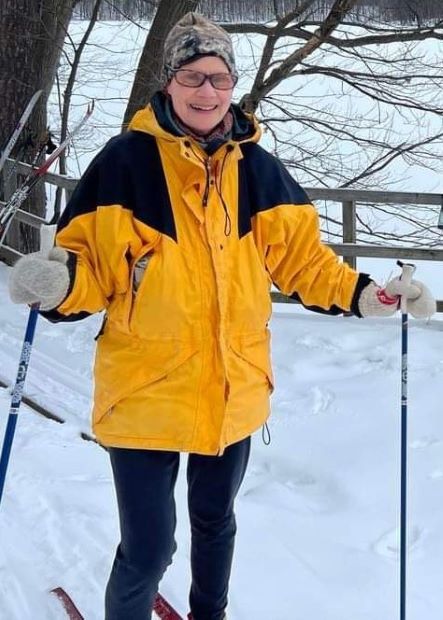
Dr. Langevin enjoys outdoor activities in all seasons.
NCCIH also has an online educational series called “Know the Science.” What does it cover?
This is a very important part of our mission at NCCIH—to educate the public. To help people understand how to interpret all the information that’s available out there, whether on the web or on TV or anywhere. People are bombarded with so much conflicting or misleading information on therapies. Our website provides a lot of information on how to help people be better consumers of complementary health care. “Know the Science” has many different modules that address topics like:
- How to understand a scientific journal article.
- How to tell whether a news story is accurate or missing important information.
- Fact-checking claims about the safety of natural products. The savvy consumer should be aware that a lot of claims made about natural products are not legitimate.
Can you give examples of who can benefit from complementary and integrative health?
Many people with chronic pain seek complementary therapies. Some populations such as veterans disproportionately suffer from chronic pain. We pay a lot of attention to special circumstances of managing pain in military and veterans’ health care systems.
Many complementary and integrative therapies are included in clinical guidelines for pain management. But they’re often not used due to barriers such as lack of insurance coverage. The Helping to End Addiction Long-term® Initiative includes research on integrating these therapies into health care systems. People struggling with opioid misuse for pain relief could especially benefit from this.
People who have problems with sleep or stress management can also benefit from complementary and integrative health. Children are suffering from stress now in really alarming proportions. So we think interventions in schools are very important.
Fatigue and pain are problems that many people with cancer and cancer survivors experience. Complementary and integrative therapies can be used together with cancer treatments and can help with recovery and residual side effects.
What do you like to do for fun when you’re not working?
The first thing I do is get outside. It doesn’t matter the weather or temperature. I love to do whatever’s in season. On my mother’s side, everybody is either an artist or musician. I guess I got some of that as well. I like to do watercolors and play the piano, and I find that relaxing. There’s a lot I like to do besides work.




